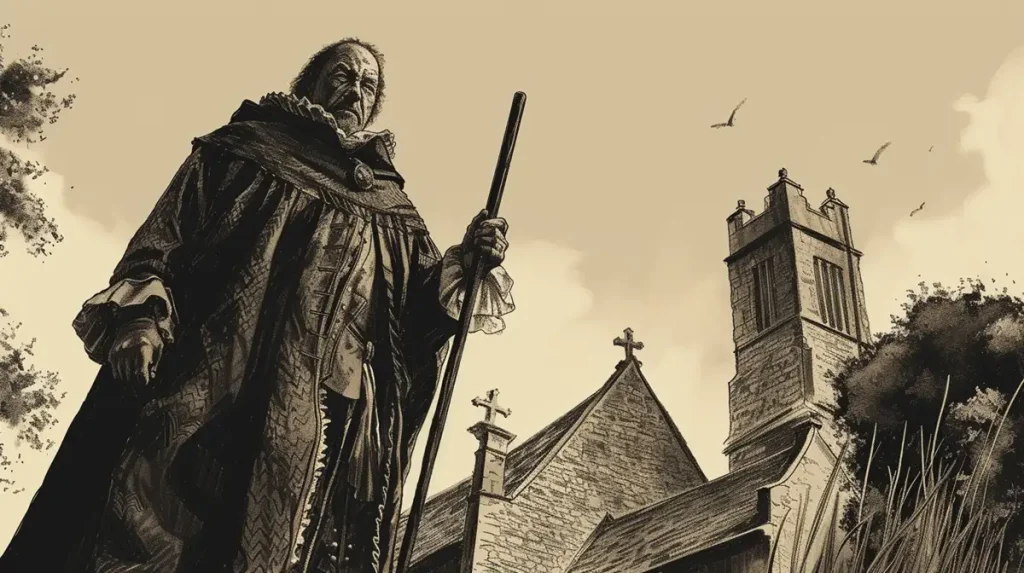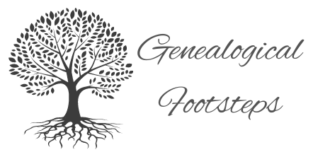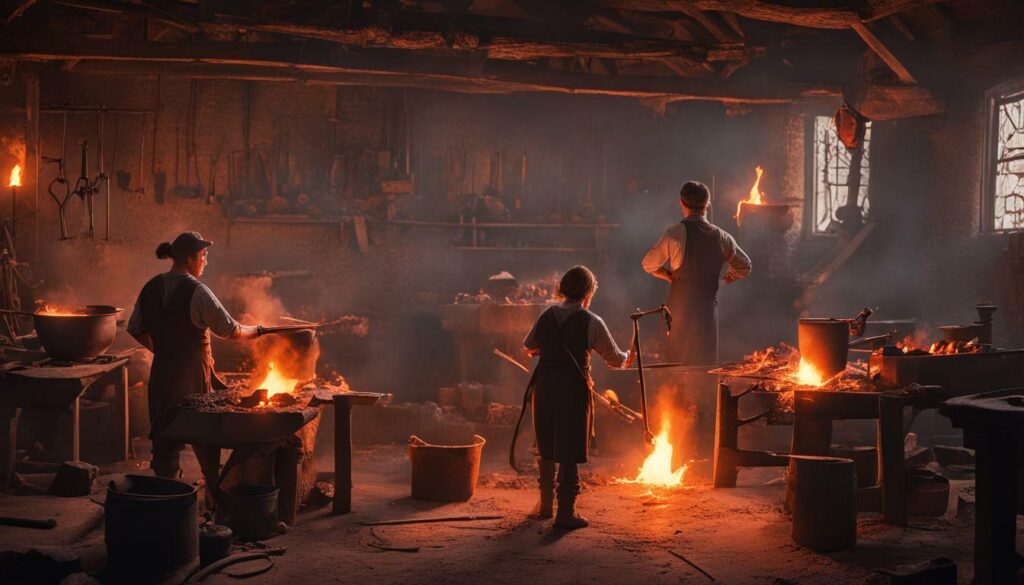Welcome to this fascinating journey into the history and significance of beadles in England’s parish communities. In this article, we will explore the personal quest to uncover the role of your beadle ancestors and gain a deeper understanding of the impact they had on maintaining order and tradition within their respective parishes.
By delving into the historical context of the beadle position, I aim to provide you with a comprehensive overview of their duties, daily life, and the distinction between church and parish beadles. Through this exploration, we will shed light on the vital role they played in upholding the values and traditions of their communities.
As we dive deeper into the beadle’s role within parish life, we will examine their interactions with the community, their significant ceremonial and public roles, and explore notable beadles in history. Furthermore, we will discuss the eventual decline of the beadle institution and the factors that contributed to its fading prominence.
If you are intrigued to discover your own ancestral connection to beadles, this article will guide you in tracing genealogical connections, providing insights into the foundation of genealogical research on occupational records.
Uncovering a beadle ancestor is a rewarding experience, and in this article, I will present a captivating case study to illustrate the discovery process. I will also emphasise the importance of verification and validation in genealogical research and highlight the benefits of engaging with historical societies for additional information and resources.
The legacy of beadles in family history is a lasting one, and we will explore the pride that comes with celebrating beadle ancestors. We will also delve into the echoes of the past, examining family traditions and traits that have been passed down through generations. Additionally, we will stress the significance of preserving the stories and history of beadle ancestors in your family records.
The Historical Context of the Beadle
The beadle position holds a significant place in the historical context of England’s parish communities. To fully understand the role and importance of beadles, it is essential to explore their origins and evolution, distinguish between the church and parish beadles, and delve into their duties and daily life. Moreover, their responsibility in maintaining order and upholding tradition within the parish communities sheds light on their crucial role throughout history.
Origins and Evolution of the Beadle Position
The beadle position traces its roots back to medieval times when they served as attendants to clergy members. Over time, their role expanded to include various administrative tasks, including record-keeping and supervising parish events. The evolution of beadles reflects the changing needs of the church and the wider community, highlighting their adaptability and resilience throughout the centuries.
Distinction Between Church and Parish Beadles
It is important to differentiate between church and parish beadles when exploring the historical context of the beadle. Church beadles primarily served within the confines of the church, assisting during services and performing ceremonial duties. On the other hand, parish beadles had a broader scope of responsibilities, overseeing the day-to-day operations of the parish, managing the poor relief system, and representing the community in various capacities.
Duties and Daily Life of a Beadle
The duties of beadles varied depending on their specific role and the needs of the parish community. They often acted as messengers, ensuring the smooth communication between different parties. Beadles were also responsible for maintaining order and discipline, enforcing rules and regulations, and implementing parish policies. Their daily life revolved around their duties, which included attending meetings, handling financial matters, and assisting in the organisation of events and ceremonies.
Maintaining Order and Tradition in the Parish
The beadle’s role in maintaining order and upholding tradition was integral to the functioning of the parish community. They ensured that religious services ran smoothly, played a crucial part in parish elections, and assisted in the execution of charitable works. Their presence and guidance contributed to the preservation of traditions and customs that held great significance to the community, fostering a sense of identity and continuity.

The Beadle in Parish Life
In the intricate tapestry of parish life in England, the beadle played a vital and multifaceted role. As an integral part of the community, beadles were responsible for various tasks that encompassed community interactions, ceremonial roles, and upholding the traditions of the parish.
Community Interactions and Relationships
The beadle was a figure respected and known by all in the parish. They served as a liaison between the church and the community, acting as a point of contact for parishioners. Beadles were often entrusted with important communication, relaying messages between the clergy and the congregation. Their warm presence and approachable nature fostered strong relationships, allowing them to provide support and guidance to individuals within the community.
Ceremonial and Public Roles of the Beadle
The beadle’s ceremonial duties were a highlight of their role within the parish. They played a central part in religious ceremonies, ensuring that the proceedings ran smoothly and the congregation was able to fully participate. From leading processions and carrying the mace to closing the church gates as a symbolic act, beadles added an air of grandeur and tradition to these events. Additionally, beadles were responsible for maintaining order during public gatherings, ensuring the smooth operation of events such as fairs and markets.
Noteworthy Beadles in History
Throughout history, there have been notable beadles who left an indelible mark on their communities. One such example is John Smith, a beadle renowned for his unwavering commitment to his parish. His dedication and exceptional service earned him the respect and admiration of both clergy and community members. Smith’s legacy continues to inspire future generations, reminding us of the impact that beadles had on parish life.
The Decline of the Beadle Institution
As time progressed, societal changes and shifting dynamics led to the decline of the beadle institution. Modernisation, administrative reforms, and evolving social structures altered the landscape of parish life. These changes gradually diminished the need for the beadle’s role, as their duties became less integral to the functioning of the parish community. Today, the role of the beadle has largely faded into history, but their contributions are remembered as an integral part of England’s rich cultural heritage.
Tracing Genealogical Connections to Beadles
In order to uncover your ancestral links to beadles, it is important to understand the foundations of genealogical research on occupational records. By navigating the vast array of genealogical resources available, you can piece together the puzzle of your family history and discover the significant role your beadle ancestors played in their communities.
Foundations of Genealogical Research on Occupational Records
Occupational genealogy focuses on tracing the lineage of individuals in specific professions, such as beadles. By examining occupational records, you can gain insights into the lives and experiences of your beadle ancestors. Key sources of information include parish registers, census records, trade directories, and apprenticeship records. These documents can provide valuable details about their occupation, residence, and family connections, enabling you to construct a comprehensive family tree.
Essential Records and Resources for Tracing Beadle Ancestors
When delving into beadle genealogy research, several essential records and resources should be explored. Parish registers, which document baptisms, marriages, and burials, often contain vital information about beadles and their families. Likewise, census records offer a snapshot of their daily lives, providing details about their occupations, addresses, and household members. Other valuable sources include local historical societies, archives, and libraries, which may house unique documents and manuscripts pertaining to beadles and their communities.
Navigating Challenges in Beadle Genealogy Research
Like any genealogical pursuit, tracing beadle ancestors comes with its own set of challenges. Common obstacles include incomplete or missing records, variations in surname spelling, and limited availability of resources. It is essential to remain diligent and employ creative research techniques to overcome these hurdles. Consulting local experts, joining genealogical forums, and utilising online databases and specialised websites can greatly aid in your search for beadle connections.
Utilising Digital and Physical Archives for Beadle Research
Both digital and physical archives play important roles in beadle genealogy research. Digital archives offer convenient access to a plethora of records, allowing you to search, view, and analyse documents from the comfort of your own home. Popular online genealogy platforms, such as Ancestry and Findmypast, are rich sources of data, providing access to digitised parish registers, census records, and other relevant documents. Physical archives, on the other hand, provide a unique hands-on experience, enabling you to explore original records, maps, and photographs. Local archives, libraries, and historical societies often house valuable collections specific to your beadle ancestors and their communities.
By leveraging the foundations of occupational genealogy, utilising essential records, navigating research challenges, and utilising both digital and physical archives, you can uncover fascinating genealogical connections to beadles and gain a deeper understanding of your family’s history and lineage.
| Occupational Records | Key Information |
|---|---|
| Parish Registers | Baptisms, marriages, and burials |
| Census Records | Occupation, residence, household members |
| Trade Directories | Information about occupation and residence |
| Apprenticeship Records | Details about individuals learning a trade |

Case Study: Uncovering a Beadle Ancestor
In this section, I will delve into a fascinating case study that highlights the process of uncovering a beadle ancestor. By following the footsteps of this individual, we will gain insights into the discovery process, the importance of verification and validation, and the advantages of engaging with historical societies.
The Discovery Process of Uncovering a Beadle Ancestor
Unravelling the history of our ancestors can be both challenging and rewarding. In this case study, our genealogical journey begins with extensive research into the relevant records. By exploring parish registers, census data, and other historical documents, we were able to trace the lineage back to a potential beadle ancestor.
Throughout the discovery process, we encountered various challenges such as inaccurate or incomplete records, discrepancies in names and dates, and limited availability of primary sources. However, through meticulous analysis and cross-referencing of different documents, we were able to establish a compelling link to the beadle lineage.
Verification and Validation of Beadle Ancestry
Verification and validation are crucial steps in genealogical research, especially when uncovering ancestral connections to specific roles or occupations within communities. To verify the beadle ancestry, we collaborated with professional genealogists and utilised expert knowledge in occupational genealogy.
Thoroughly examining the discovered evidence, we established a strong case for our ancestor’s involvement as a beadle in the parish community. This verification process involved scrutinising official records, cross-referencing information, and analysing historical context to validate the likelihood of the ancestral connection.
Engaging with Historical Societies for Beadle Research
Historical societies play a vital role in preserving and providing valuable resources for genealogical research. In our case study, we actively engaged with local historical societies specialising in the history and traditions of parish communities.
By reaching out to these societies, we gained access to exclusive archives, unique records, and expert advice. The knowledgeable members of these societies provided invaluable insights into the beadle’s role, daily life, and significant contributions within the parish. Their guidance and support greatly enhanced the depth and accuracy of our research.
Engaging with historical societies not only enriched our understanding of the beadle institution but also fostered connections with individuals who shared a passion for uncovering ancestral stories. The collaboration and exchange of information further catalysed our exploration of the beadle ancestor’s legacy.
Uncovering a Beadle Ancestor
Through this enlightening case study, we have witnessed the excitement and challenges of uncovering a beadle ancestor. The discovery process highlighted the importance of thoroughly examining relevant records, employing verification and validation techniques, and seeking support from historical societies.
In the next section, we will explore the broader legacy of beadles in family history, celebrating ancestral pride and preserving the stories of these remarkable individuals.
The Legacy of Beadles in Family History
As we delve into the history of beadles and unravel their significance in England’s parish communities, we can’t overlook their enduring legacy in family history. Discovering a beadle ancestor can evoke a sense of ancestral pride, connecting us to a lineage that played an essential role in maintaining order and tradition.
Ancestral Pride: Celebrating Beadle Ancestors
When we uncover the presence of a beadle ancestor in our family tree, it’s a moment of celebration. It allows us to honor and commemorate the contributions they made to their communities. Beadles, with their distinctive uniforms and authoritative presence, were the guardians of order, leaving an indelible mark on the collective memory of their descendants.
Echoes of the Past: Examining Family Traditions and Traits
Exploring the legacy of beadles can also offer valuable insights into family traditions and traits that have been passed down through generations. It provides an opportunity to examine the echoes of the past and understand how our beadle ancestors might have shaped our family culture and values. Perhaps there are stories, customs, or even inherited skills directly linked to their distinguished role.
Preservation of Stories: Documenting Beadle Ancestors in Family History
Preserving the stories of our beadle ancestors is crucial for the preservation of family history. It ensures that future generations can connect with their roots and appreciate the sacrifices and accomplishments of their predecessors. By documenting the experiences and achievements of our beadle ancestors, we keep their memory alive and foster a deeper understanding of our familial heritage.
Conclusion
Reflecting on the journey of discovering your beadle ancestors can bring a sense of connection and understanding to your family history. Through delving into the historical context of the beadle role and exploring their responsibilities in maintaining order and tradition in parish communities, you have gained valuable insights into your ancestral past.
Uncovering a beadle ancestor is more than just discovering a name on a family tree. It is an opportunity to glimpse into the lives of individuals who played a pivotal role in shaping their communities. The ceremonial and public roles they undertook, as well as the relationships they built within their communities, reveal a rich tapestry of history waiting to be unraveled.
As you embark on this exploration, we encourage you to share your journey with others and inspire them to delve into their family history as well. The stories of our ancestors hold a treasure trove of knowledge and understanding about who we are and where we come from. By embracing the call to discovery, we open ourselves up to a deeper connection to the past and an appreciation for the legacies that live on within us.

My name is Anthony, the founder of Genealogical Footsteps. I have over 20 years of dedicated experience in family history and genealogy (although I am not a professional genealogist). I hold BA in history, and am considering further education (despite my age). My journey in genealogy has led me to remarkable discoveries and projects, particularly where my Cypriot genealogy is concerned. I am passionate about uncovering the stories behind names and have helped friends and family connect with their heritage, including those with Cypriot, Celtic, and Viking ancestry. Click here to read more about me.


